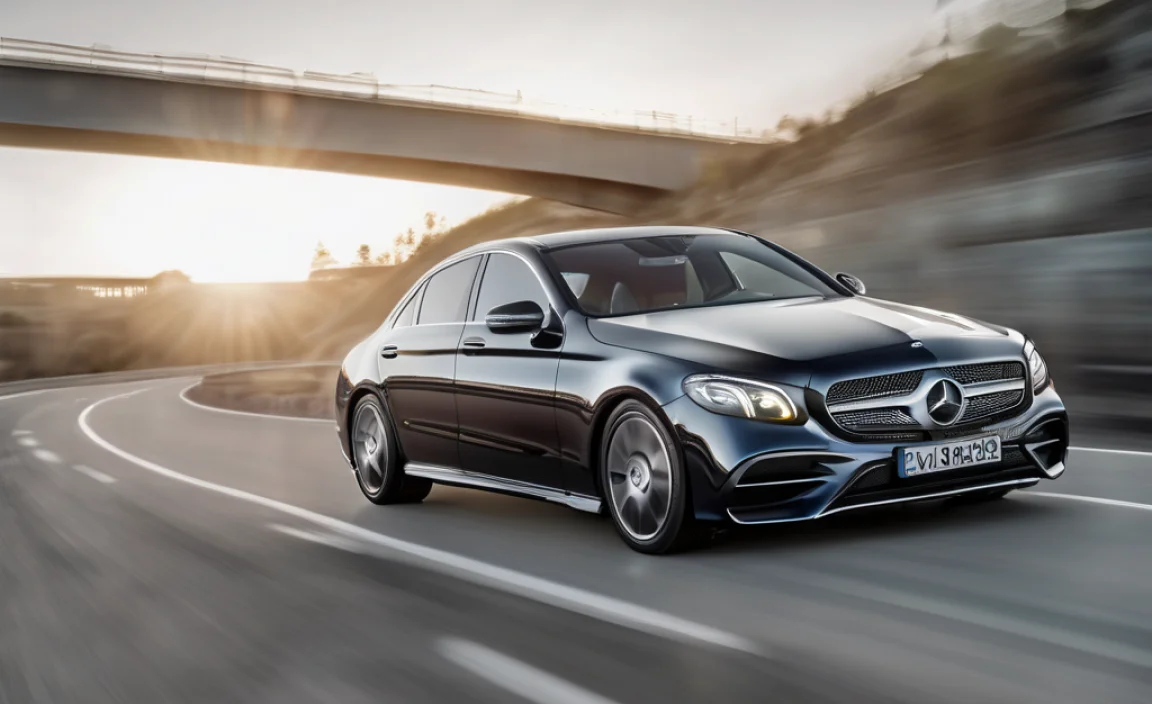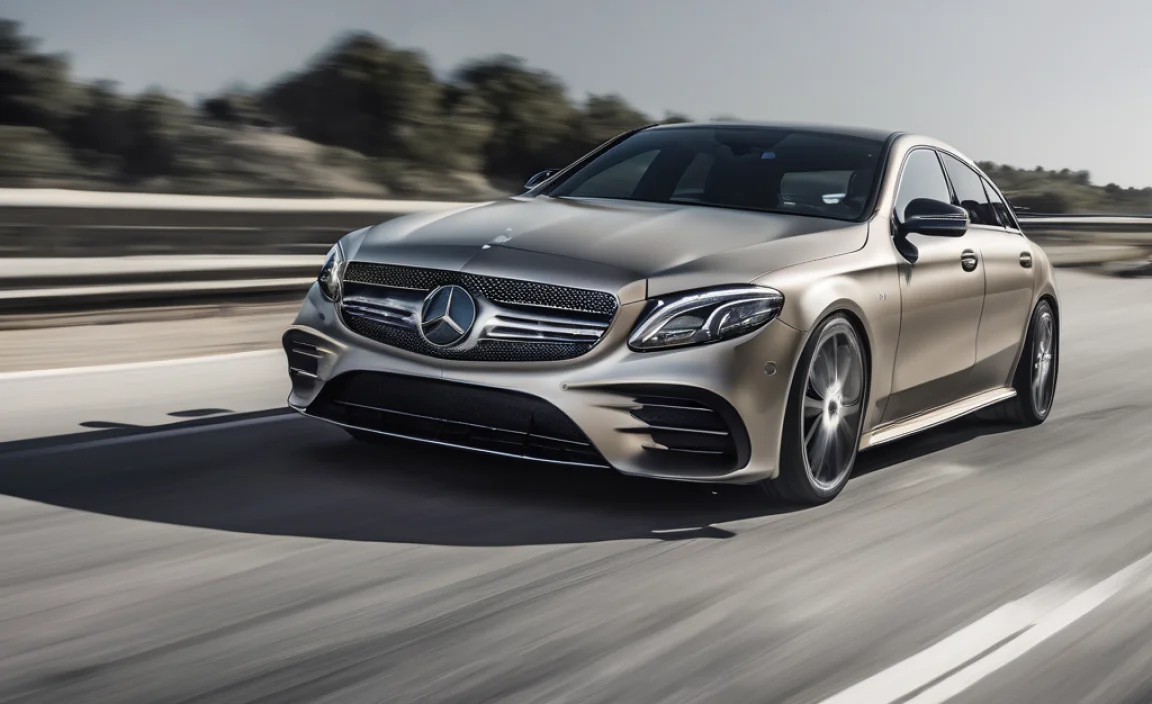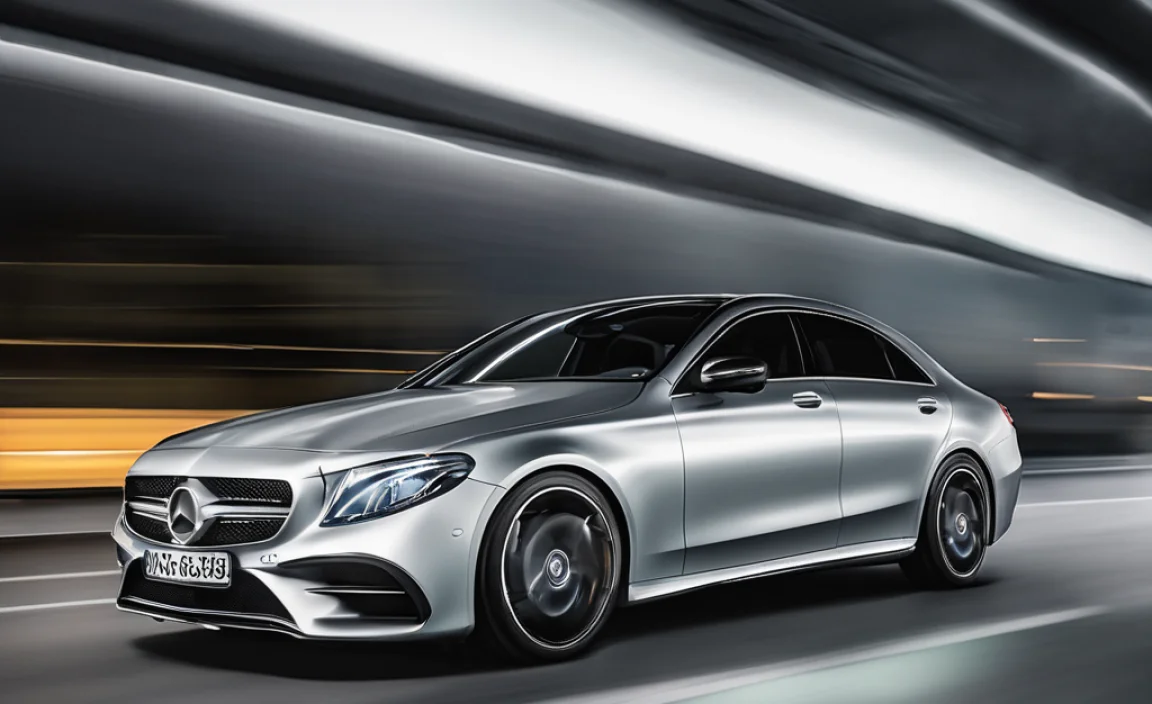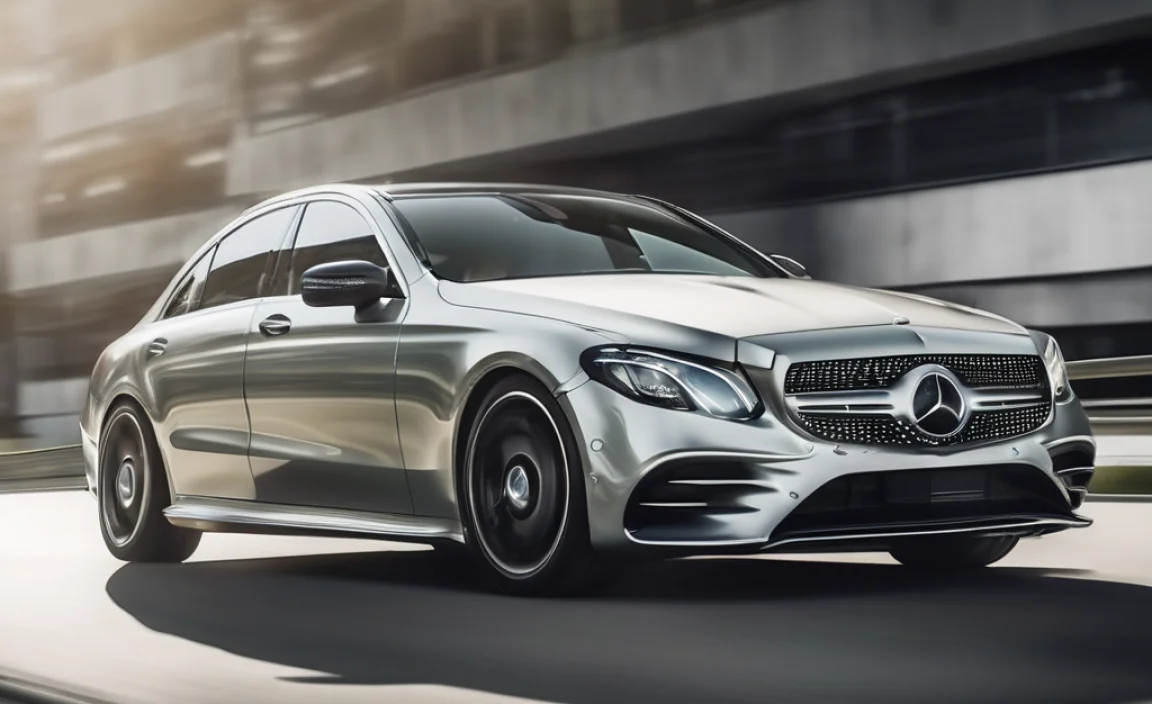Mercedes Level 3 Drive Pilot System: Genius Safety
The Mercedes Level 3 Drive Pilot System is an advanced driver-assistance technology that allows the car to take over driving in specific situations. It’s designed to enhance safety and reduce driver workload by handling tasks like steering, acceleration, and braking on highways under certain conditions. This system represents a significant step towards autonomous driving, offering a glimpse into the future of automotive safety and convenience.
Ever felt that little bit of extra stress on a long highway drive, wishing your car could lend a hand? You’re not alone! Modern cars are packed with technology, and understanding it all can sometimes feel like a puzzle. One of the most exciting, and perhaps a bit mystifying, advancements is the Mercedes Level 3 Drive Pilot System. It sounds high-tech, and it is, but at its core, it’s designed with one thing in mind: making your drive safer and more relaxing. We’re going to break down what this system is, how it works, and why it’s such a leap forward in automotive safety, all in a way that’s easy to understand. Get ready to feel more confident about the amazing tech in your Mercedes-Benz!
What is the Mercedes Level 3 Drive Pilot System?

Think of the Mercedes Level 3 Drive Pilot System as your car’s super-smart co-pilot, but one that can actually take the wheel under specific, controlled circumstances. It’s part of Mercedes-Benz’s DRIVE PILOT suite, pushing the boundaries of what a car can do on its own.
The Society of Automotive Engineers (SAE) defines levels of driving automation, and Level 3 is a significant milestone. While Level 2 systems (like adaptive cruise control with steering assist) require the driver to constantly monitor and be ready to intervene, Level 3 systems allow the driver to take their hands off the steering wheel and their eyes off the road under certain operational design domains (ODDs). This means the car is truly driving itself, but only in very specific conditions.
So, what does this mean for you? It means your Mercedes can handle the monotonous parts of driving, like long stretches of highway traffic, giving you a moment to breathe, relax, or even prepare for your next task. It’s not about letting the car drive you everywhere; it’s about enhancing safety and comfort when conditions are right.
How Does Level 3 Drive Pilot Work?

The magic behind the Level 3 Drive Pilot system is a complex symphony of sensors, cameras, and sophisticated software working in harmony. It’s designed to perceive the car’s surroundings and make intelligent driving decisions.
Here’s a simplified look at the key components and how they work together:
- Advanced Sensors: Think of these as the car’s eyes and ears. This includes radar, lidar (light detection and ranging), and high-definition cameras that constantly scan the environment. Lidar, in particular, is a sophisticated sensor that uses laser pulses to create a detailed 3D map of the surroundings, crucial for precise object detection and distance measurement, even in low light conditions. You can learn more about lidar technology and its applications from resources like Lidar.com.
- High-Definition Maps: The system relies on incredibly detailed, up-to-date maps that provide information about road geometry, speed limits, lane markings, and potential hazards. These maps are far more detailed than what you’d find in a typical navigation system.
- AI and Software: Powerful onboard computers process all the data from the sensors and maps. Artificial intelligence algorithms analyze the situation, predict the behavior of other road users, and decide on the best driving actions, such as accelerating, braking, or steering.
- Redundancy and Safety Checks: Because this is a Level 3 system, safety is paramount. The system has multiple redundancies built-in. If a sensor fails or a condition arises that the system can’t handle, it will safely hand control back to the driver, often with ample warning.
When the system is engaged and conditions are met, the car will control steering, acceleration, and braking. It can navigate lane changes, maintain speed, and react to traffic. The driver is still expected to take over when prompted by the vehicle or when exiting the system’s operational domain.
Key Features of the Mercedes Level 3 Drive Pilot System

Mercedes-Benz has packed its Level 3 Drive Pilot system with features designed to make driving not only safer but also significantly less taxing. It’s a true testament to their ” a philosophy of safety.”
Intelligent Cruise Control with Steering Assist
This is the foundation of the system. It goes beyond standard adaptive cruise control by not only maintaining a set speed and distance to the vehicle ahead but also actively steering within the lane. It uses cameras to track lane markings and can even adjust speed based on speed limits or traffic conditions.
Lane Centering and Keeping
Whether on a straight road or navigating gentle curves, the system can keep the vehicle precisely centered in its lane. This reduces the constant small steering adjustments drivers normally make, leading to less fatigue.
Automated Lane Changes
In suitable conditions, the Level 3 system can initiate and execute lane changes. It uses its sensors to check for safe gaps in adjacent lanes before smoothly moving over. This is a game-changer, particularly in heavy traffic where manual lane changes can be stressful.
Traffic Jam Assist
One of the most appreciated features in congested areas, Traffic Jam Assist allows the car to follow the vehicle in front at a low speed, stop and start automatically, and stay within its lane. This can turn a stressful crawl into a much more manageable experience. It’s crucial for drivers to understand that this feature is designed for specific low-speed traffic scenarios to enhance safety and reduce driver burden.
Conditional Engagement
It’s vital to remember that Level 3 Drive Pilot is not a fully autonomous system for all driving. It’s designed to operate only under very specific conditions, typically on designated highways with clear lane markings, good weather, and during daylight hours. This ensures the system is being used in environments where it can perform reliably and safely.
Where Can You Use the Level 3 Drive Pilot System?

The operational domain for the Mercedes Level 3 Drive Pilot system is intentionally narrow to ensure the highest level of safety. It’s not designed for every road or every situation, but rather for specific, predictable environments where it can excel.
Currently, its availability is often geo-fenced and restricted to certain highways within specific countries where regulatory approval has been granted. For example, early deployments have focused on routes within Germany, which was one of the first countries to permit Level 3 systems under specific conditions.
Here are the typical conditions under which the Level 3 Drive Pilot system is designed to operate:
- Well-Tended Highways: The system requires clearly marked, well-maintained highways.
- Good Weather Conditions: Heavy rain, snow, fog, or extreme temperatures can affect sensor performance, so the system typically disengages in such conditions.
- Daylight Hours: While advanced sensors can work in low light, the system’s full capabilities are often optimized for daytime operation.
- Separated Traffic Flow: It’s usually limited to multi-lane highways where traffic flows in opposing directions are physically separated.
- Specific Speed Ranges: The system operates within defined speed limits that are typically found on highways.
Mercedes-Benz is continuously working to expand the operational capabilities and geographical availability of DRIVE PILOT, but always with a strong emphasis on safety and regulatory compliance. For the most up-to-date information on availability in your region, it’s always best to consult your local Mercedes-Benz dealer or the official Mercedes-Benz website.
Understanding SAE Levels of Driving Automation

The Society of Automotive Engineers (SAE) provides a clear classification system for driving automation, which helps us understand where the Mercedes Level 3 Drive Pilot system fits in. It’s a spectrum, not just a few boxes, and knowing these levels can help clarify what your car can and cannot do.
Here’s a breakdown of the SAE levels:
| Level | Full Name | Description | Driver’s Role |
|---|---|---|---|
| 0 | No Driving Automation | The human driver performs all driving tasks. | Full attention required. |
| 1 | Driver Assistance | The vehicle can provide steering or acceleration/deceleration assistance, but not both simultaneously. (e.g., Adaptive Cruise Control) | Full attention required. Driver controls vehicle. |
| 2 | Partial Driving Automation | The vehicle can perform both steering and acceleration/deceleration simultaneously under specific circumstances. (e.g., ACC with Steering Assist) | Driver must monitor. Driver must be ready to intervene at any time. |
| 3 | Conditional Driving Automation | The vehicle can perform all driving tasks under specific environmental conditions, and the human driver does not need to monitor the driving environment. However, the human driver must be available to take back control when requested by the system. | Driver can disengage from monitoring. Driver must be ready to take over when prompted. |
| 4 | High Driving Automation | The vehicle can perform all driving tasks and monitor the driving environment under specific operational design domains (ODDs). The driver may not need to intervene even if the system encounters a fallback-ready condition. | Driver may not need to intervene. System operates independently within its ODD. |
| 5 | Full Driving Automation | The vehicle can perform all driving tasks under all conditions that a human driver could manage. | No driver attention required. Vehicle is fully autonomous. |
As you can see, Level 3 is a significant step up from Level 2. The key difference is that the driver can truly take their attention away from the task of driving when the system is active, as long as it is within its operational design domain. This is the “conditional” aspect of Level 3 automation.
Safety First: Why Level 3 is Genius Safety
The “Genius Safety” moniker for the Mercedes Level 3 Drive Pilot system isn’t just marketing speak; it highlights the intelligent, layered approach to enhancing driver and passenger well-being. While it allows for hands-off driving, its primary function is to use technology to prevent accidents and reduce the stress that often leads to driver error.
Reducing Driver Fatigue
Long drives, especially in stop-and-go traffic or on monotonous highway stretches, can be incredibly tiring. Fatigue impairs judgment, slows reaction times, and significantly increases the risk of accidents. By taking over the driving tasks in these specific scenarios, Level 3 Drive Pilot allows drivers to rest their minds and bodies, arriving at their destination more alert and less stressed. This is a proactive approach to safety, preventing a common cause of accidents.
Reacting Faster Than Humans
In certain predictable situations, the system’s sensors and processing power can detect hazards and react faster than a human driver. For instance, detecting a sudden deceleration of the vehicle ahead or an object in the road can happen instantaneously, allowing for a smoother and quicker evasive maneuver or braking action.
Precise Control in Critical Moments
The system’s ability to maintain precise lane positioning and control speed minimizes jerky movements that drivers might make under pressure. This smoother control can prevent minor collisions and make the overall ride more comfortable and less jarring for everyone inside the vehicle.
System Monitoring and Handover Protocol
Crucially, Mercedes-Benz has implemented robust safety protocols. The system continuously monitors its own performance and the environment. If it encounters a situation it cannot handle or if the operational design domain is exceeded (e.g., bad weather, complex roadworks), it initiates a clear and timely handover request to the driver. This protocol includes visual and audible warnings, giving the driver ample time to resume manual control. The training and understanding of these handover procedures are vital for drivers using the system.
Continuous Improvement and Updates
Like all advanced automotive technologies, the software behind DRIVE PILOT can be updated over time. This means that the system can improve its performance, expand its capabilities, and enhance its safety features through over-the-air updates, ensuring your vehicle benefits from the latest advancements in automotive safety.
Potential Benefits and Drawbacks
Every new technology comes with its advantages and things to consider. The Level 3 Drive Pilot system is no different. Understanding both sides helps you use it wisely and appreciate its place in your driving experience.
Benefits
- Reduced Driver Fatigue: As mentioned, this is a major benefit for long journeys and traffic.
- Enhanced Safety: In its designed conditions, it can react faster and more consistently than a human.
- Increased Comfort: Smoother driving and less need for constant micro-adjustments make for a more relaxing ride.
- Productivity/Relaxation Time: Allows drivers to momentarily shift focus from driving to other tasks or simply relax.
- Pioneer Technology: Being part of the leading edge of automotive innovation.
Drawbacks
- Limited Operational Domain: Only works in very specific conditions and locations.
- Driver Responsibility During Handover: The driver must always be ready to take over when prompted. Distraction when the system is active can be dangerous.
- Cost: Advanced systems like this are typically optional extras and add to the vehicle’s purchase price.
- Public Perception and Understanding: Ensuring all drivers understand the limitations and responsibilities of Level 3 automation is crucial.
- Regulatory Hurdles: Deployment is dependent on country-specific legal approvals.
Mercedes-Benz is committed to making these systems as intuitive and safe as possible, but driver education remains a key component of responsible adoption.
Frequently Asked Questions (FAQ)
Q1: What is the main purpose of the Mercedes Level 3 Drive Pilot system?
A1: The main purpose is to enhance safety and reduce driver fatigue by allowing the car to take over driving tasks on highways under specific, controlled conditions, such as in traffic jams or on long, straight stretches.
Q2: Does Level 3 Drive Pilot mean my car can drive itself everywhere?
A2: No, Level 3 means the car can drive itself under very specific operational design domains (ODDs) – typically well-marked highways, good weather, and daylight. The driver must be ready to take back control when the system requests it.
Q3: What are the conditions required for Level 3 Drive Pilot to be active?
A3: Conditions usually include clearly marked highways, moderate speeds, good weather (no heavy rain, snow, or fog), and sufficient daylight. The exact requirements can vary by region and specific Mercedes-Benz model.
Q4: What happens if the system encounters a situation it can’t handle?
A4: The system will issue a clear warning to the driver and request them to take over manual control. It’s designed to provide sufficient time for the driver to safely resume driving.
Q5: How is Level 3 Drive Pilot different from Level 2 systems like adaptive cruise control with lane keeping?
A5: The key difference is that with Level 3, the driver is not required to constantly monitor the driving environment or keep their hands on the wheel when the system is active. With Level 2, the driver must always be attentive and ready to intervene immediately.
Q6: Can I use Level 3 Drive Pilot in my country?
A6: Availability is limited and depends on regulatory approvals in each country. Mercedes-Benz is working to expand its availability, but it’s currently deployed in specific markets and on certain approved road types. Always check local regulations and Mercedes-Benz information for your region.
The Future of Driving Assistance
The Mercedes Level 3 Drive Pilot system is more than just a feature; it’s a powerful statement about the direction of automotive technology. It represents a crucial step towards a future where driving is safer, more efficient, and less demanding.
As manufacturers like Mercedes-Benz continue to develop these advanced driver-assistance systems, we can expect to see further integration of AI, enhanced sensor capabilities, and expanded operational domains. The goal is not just automated driving for its own sake, but to create a synergy between the driver and the vehicle, where technology augments human capabilities and mitigates risks.
The journey from basic cruise control to full autonomy is a gradual one, marked by these significant milestones like Level 3. Each step builds on the last, incorporating lessons learned and pushing the boundaries of what’s possible. The “Genius Safety” of systems like DRIVE PILOT is paving the way for a future where the stress of commuting is reduced, safety is further enhanced, and the experience of being in a car is profoundly transformed. For now, it’s an incredible tool that offers a glimpse into that exciting future, right from the driver’s seat. Keep an eye on this space, as the evolution of driving assistance is happening faster than you might think!